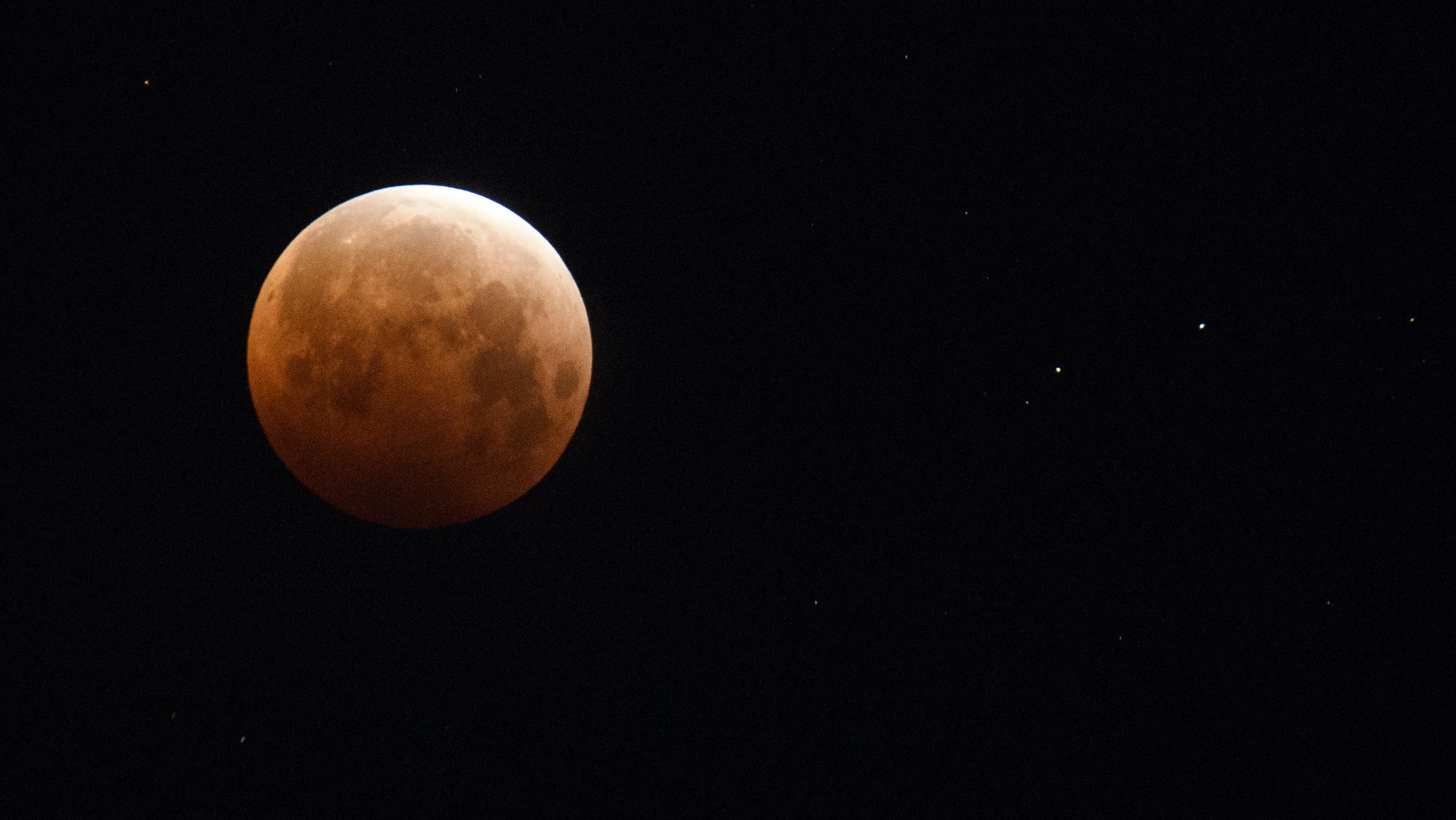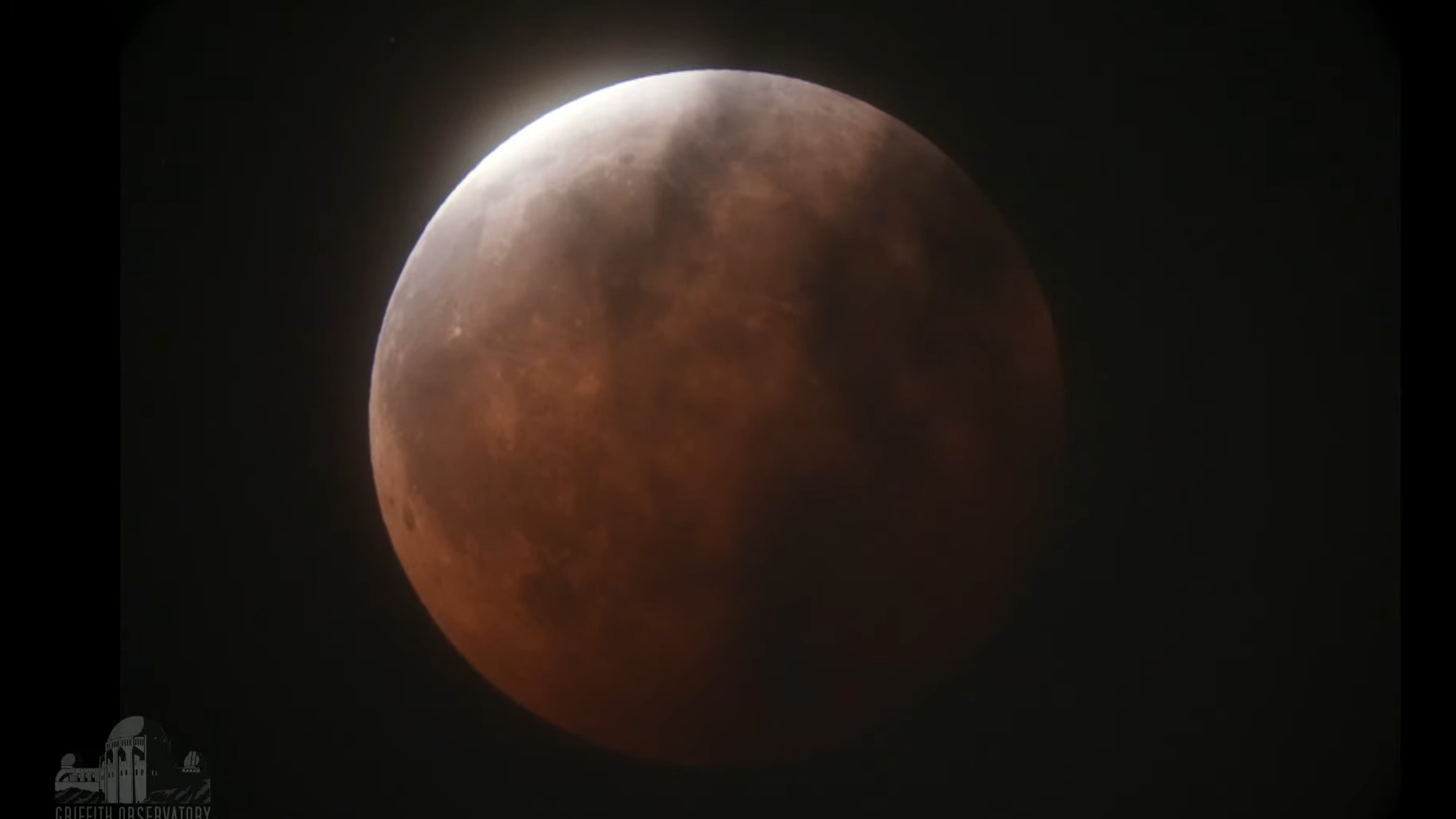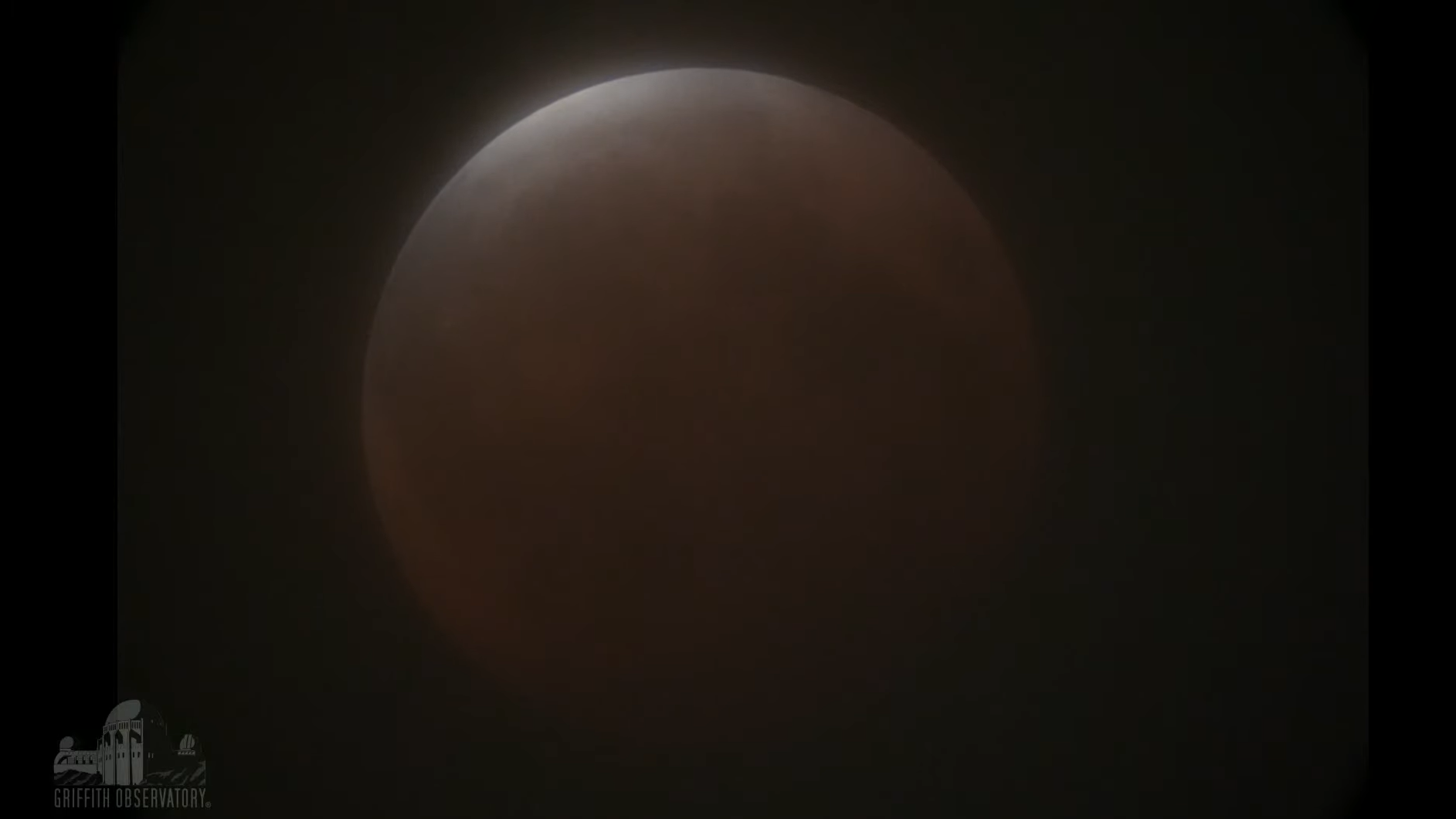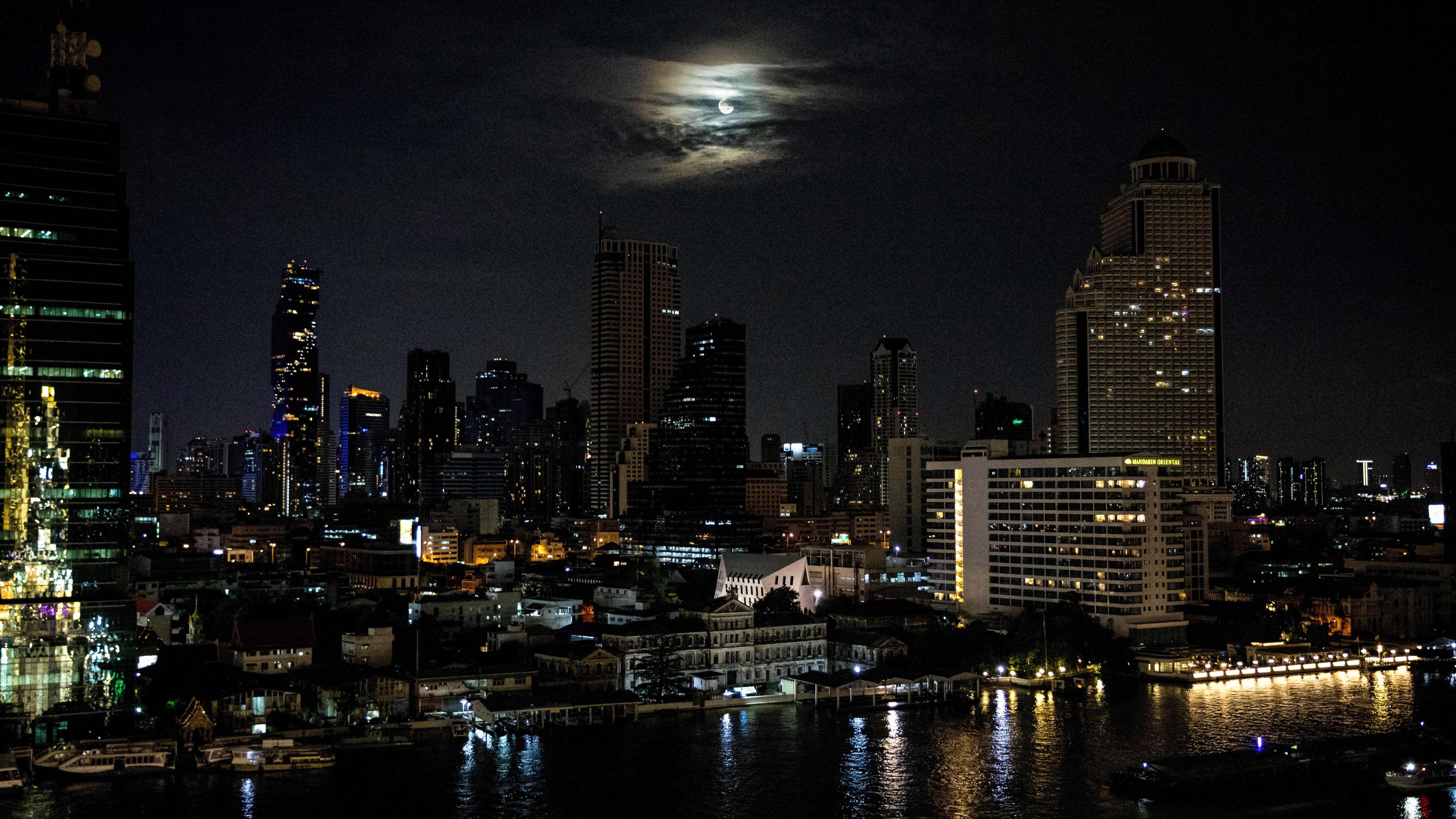Spectacular Super Flower Blood Moon of 2021 thrills stargazers around the world
Supermoon total eclipse 2021: this is how the world enjoyed it!
This year's largest full moon arrived with an added bonus for stargazers early Wednesday (May 26), as the only total lunar eclipse of 2021 created an eerie red sight in the predawn sky. The result: a Super Flower Blood Moon that wowed spectators able to see it.
The eclipse was visible from the western part of the Americas, islands of the Pacific Ocean, all of Australia and parts of eastern Asia. Those in Australia, New Zealand, Hawaii and Papua New Guinea had the best seats, as they could enjoy the entire five-hour spectacle during night hours, including the moments when the moon entered and exited the so-called penumbra and umbra phases, which mark the beginning and end of the partial and total eclipse respectively.
In the penumbra phase, the Earth's shadow blocks sunlight imperfectly. As a result, the moon is still visible but slightly dimmer. The shorter and more awe inspiring umbra phase takes place when the moon enters Earth's complete shadow. The total eclipse occurs in the middle of this three-hour passage; this time, totality lasted about 16 minutes and turned the moon red (an effect caused by the Earth's atmosphere).
Super Flower Blood Moon: Amazing photos of the total lunar eclipse of 2021
Observatories from the U.S. to Australia turned their telescopes toward the moon and shared the experience with their audiences in a series of Super Flower Blood Moon webcasts.








A view from Griffith Observatory in southern California, sometimes obscured with clouds, showed the Earth's shadow creep slowly across the lunar disk, submerging it in darkness. But commentators from Los Angeles, Chicago and Seattle complained about clouds hampering the experience.
"Woke up randomly this morning and walked outside to see the blood moon but #seattle weather made that impossible," a user called Linlin Huang wrote on Twitter.
Breaking space news, the latest updates on rocket launches, skywatching events and more!
Woke up randomly this morning and walked outside to see the blood moon but #seattle weather made that impossible. I did see a black dog off leash with no human though 🙃#LunarEclipse2021 #supermoon #bloodmoon2021May 26, 2021
The weather was more favorable in Florida, where residents could only see the partial eclipse before the moon set and the sun rose.
"Lunar eclipse in paradise 🌙," photographer Greg Diesel Walck tweeted with an image of the partly covered moon against the brightening skies of dawn. "We only got a partial eclipse here in Ormond Beach FL but still a beautiful sight and the weather was perfect."
Lunar eclipse in paradise 🌙We only got a partial eclipse here in Ormond Beach FL but still a beautiful sight and the weather was perfect. @AMHQ @JenCarfagno @StephanieAbrams #weather #LunarEclipse2021 #sky pic.twitter.com/pm9xOwEoDLMay 26, 2021
Amateur skywatchers and astrophotographers in Australia, which had one of the fullest experiences this time around, mostly enjoyed clear sky during eclipse hours.
Sydney-based Rami Mandow, the founder of Space Australia, shared a series of images throughout the eclipse, first captured with his smartphone connected to a small telescope, later switching to a DSLR camera.
"Here it comes!" Mandow tweeted with an exquisite shot of the beginning of penumbra. "Enjoying the eclipse beginning with a nice glass of scotch!"
Getting there!!! Wow! It’s so beautiful! Half way there …. Last phone capture, switching to CCD! #SpaceAusMoon #LunarEclipse2021 pic.twitter.com/pIVous8QH7May 26, 2021
Mandow later shared images of amateur astrophotographers and skywatchers lining the popular Bondi Beach in Sydney just as the super moon emerged above the ocean.
Friend is at Bondi beach and the Moon has risen! Looks glorious coming over the ocean … Lots of folks out with cameras and telescopic lenses …. @danilic are you there?! #SpaceAusMoon #LunarEclipse2021 pic.twitter.com/TLOKBjX9CCMay 26, 2021
Astronomer Michael Brown, of Monash University in Melbourne, Australia, took several pictures of the progressing eclipse with his smartphone and what he described as a "cheap telescope."
"Getting some red in the lunar eclipse," Brown tweeted with an image. "Blood may be overstating it, but definitely red."
Oh yeah, getting some red in the lunar eclipse. Blood may be overstating it, but definitely red. #LunarEclipse2021 pic.twitter.com/Bs924c11eLMay 26, 2021
Other observers in Australia complained about unfavorable weather. A few users in Brisbane tweeted images of the dusk sky hidden behind clouds.
In Hong Kong, where the peak of the eclipse coincided with moonrise, crowds, too, flocked to the shores to get a glimpse of the blood moon.
"Everybody waiting for the blood moon to rise here in HK [Hong Kong] in about 15 mins," tweeted Alan Pak Tao Lau, Professor of Electrical Engineering, The Hong Kong Polytechnic University.
everybody waiting for the blood moon rise here in HK in about 15 mins #LunarEclipse2021 pic.twitter.com/fZQ0eSaBIrMay 26, 2021
Earth will catch the next lunar eclipse on Nov. 18, although this one will be somewhat imperfect as a small sliver of the moon’s disk will remain outside the umbra. According to Diana Hannikainen, of Sky & Telescope, the experience for regular viewers will be almost indistinguishable from a total eclipse.
"Technically, the November event will be partial, but only the thinnest sliver of the Moon’s disk will remain outside the umbra, so for all intents and purposes it’ll be very much like a total eclipse,” Hannikainen said in a statement.
The next official total lunar eclipse will take place on May 15-16 2022 and will be best observable from western parts of Europe and Africa, and most of the Americas.
In the meantime, skywatchers can look forward to a solar eclipse coming up in June. On June 10, the moon will pass in front of the sun as seen from Earth, but will be a bit too close to our planet to completely block the sun. The result will be an annular solar eclipse, also known as a "ring of fire" eclipse, with a thin ring of the sun still shining around the moon.
Follow Tereza Pultarova on Twitter @TerezaPultarova. Follow us on Twitter @Spacedotcom and on Facebook.
Join our Space Forums to keep talking space on the latest missions, night sky and more! And if you have a news tip, correction or comment, let us know at: community@space.com.

Tereza is a London-based science and technology journalist, aspiring fiction writer and amateur gymnast. Originally from Prague, the Czech Republic, she spent the first seven years of her career working as a reporter, script-writer and presenter for various TV programmes of the Czech Public Service Television. She later took a career break to pursue further education and added a Master's in Science from the International Space University, France, to her Bachelor's in Journalism and Master's in Cultural Anthropology from Prague's Charles University. She worked as a reporter at the Engineering and Technology magazine, freelanced for a range of publications including Live Science, Space.com, Professional Engineering, Via Satellite and Space News and served as a maternity cover science editor at the European Space Agency.
